How to Plant and Grow Plantain | Gardener’s Path
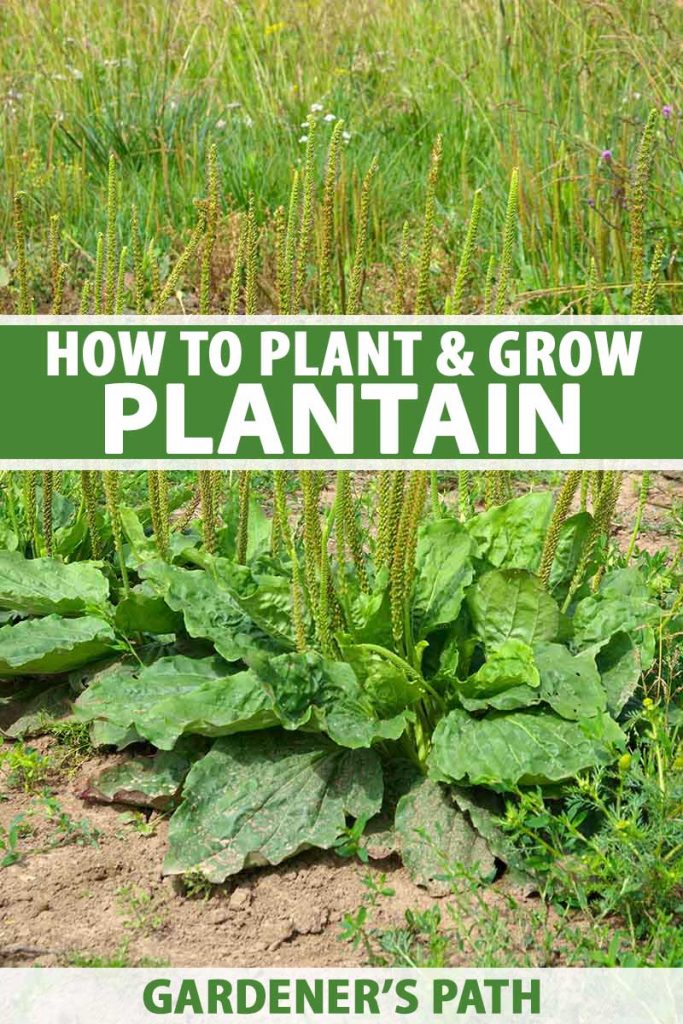
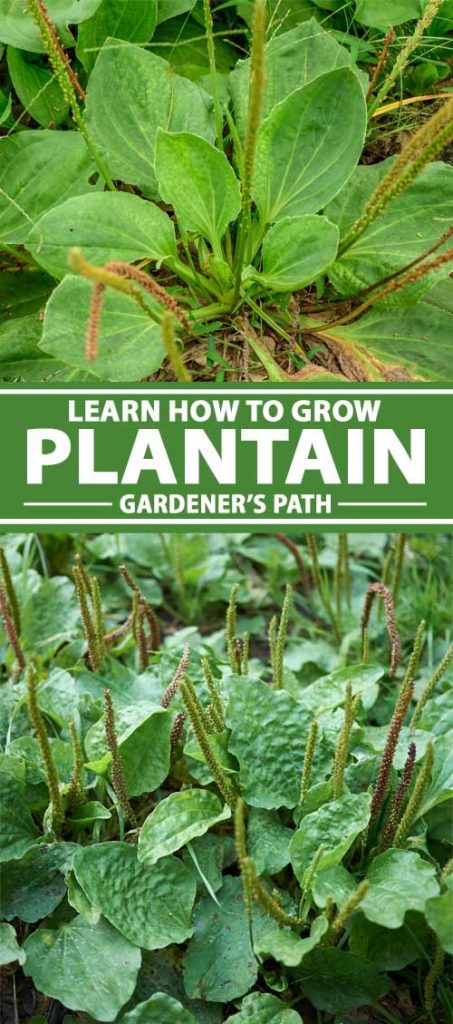
Plantago spp.
Why would anyone incommode to grow plantain?
For the most part unnoticed by the modern gardener, and often regarded as an irksome Mary Jane, plantain is one of those overlooked and often ridiculed plants that in reality has rather a lot to offer.
Once we check to appreciate it, that is.
With edible nutritious leaves, medicinal prise, and ecological importance, this constitute is really deserving a indorsement look.
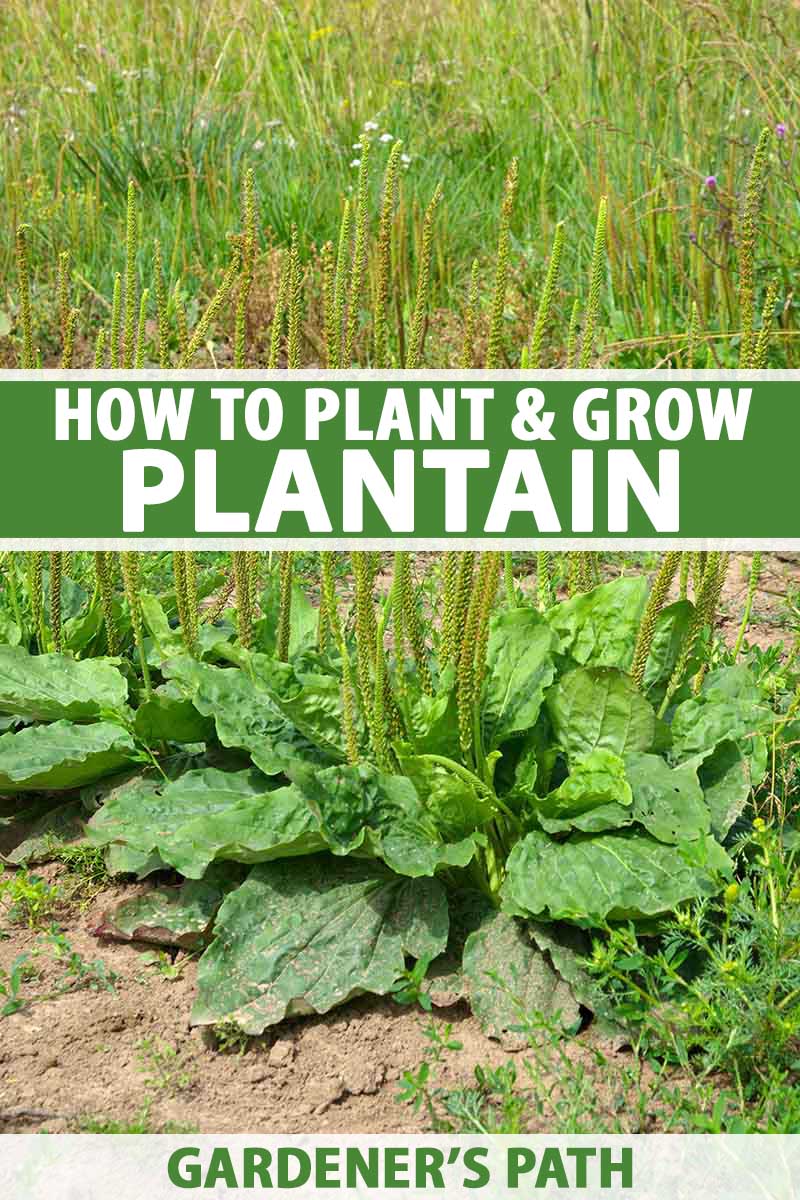
We link to vendors to helper you find oneself relevant products. If you buy from ace of our links, we may earn a perpetration .
Luckily, many gardeners are beginning to spread the tidings about the right prise of this useful medicinal herb.
What You'll Learn
- What Is Plantain?
- Cultivation and History
- Medicinal Habit
- Propagation
- How to Grow
- Growing Tips
- Where to Bargain
- Managing Pests and Disease
- Harvest home
- Preserving
- Cooking Ideas
- Quick Reference Growing Guide
What Is Plantain?
Commonly found growing in lawns and disturbed areas, erst you learn to identify this herbaceous perennial, you will likely start noticing it everywhere.
There are about 200 species in the Plantago genus. The three most vernacular varieties found in the US are broadleaf plantain (P. major), Rugel's plantain (P. rugelii), and ribwort plantain (P. lanceolata).
All of these are proverbial past many additional common names, and all are used in herbal medicine.
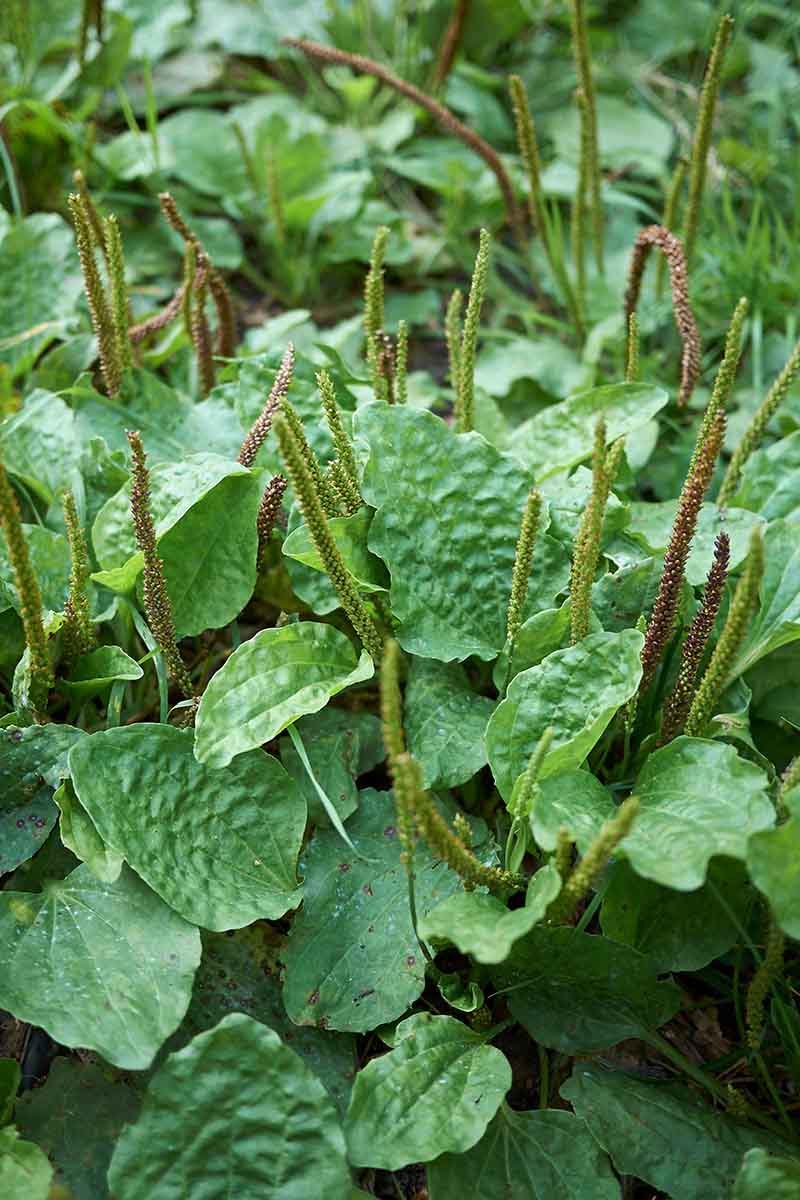
Broad-leaved plantain is a compact continual flowering herb that has low growing, egg-shaped, waxy green leaves with conspicuous veins. It's also known as birdseed, deciduous plantain, healing blade, and hen plant.
Said to have been brought to what is now the US by the Puritans, several Native Americans called it "white man's footprint." Foliage stool maturate to almost six inches long and four inches broad.
In late summer, it produces a dark-green, leafless husk that rises above the leaves, with long, spiky clusters of tiny, obtusely jam-packed chromatic flowers with purple stamens.
Called for 19th century German botanist Ferdinand Ignatius Xavier Rugel, Rugel's plantain looks like to broadleaf, and the two are often confused.
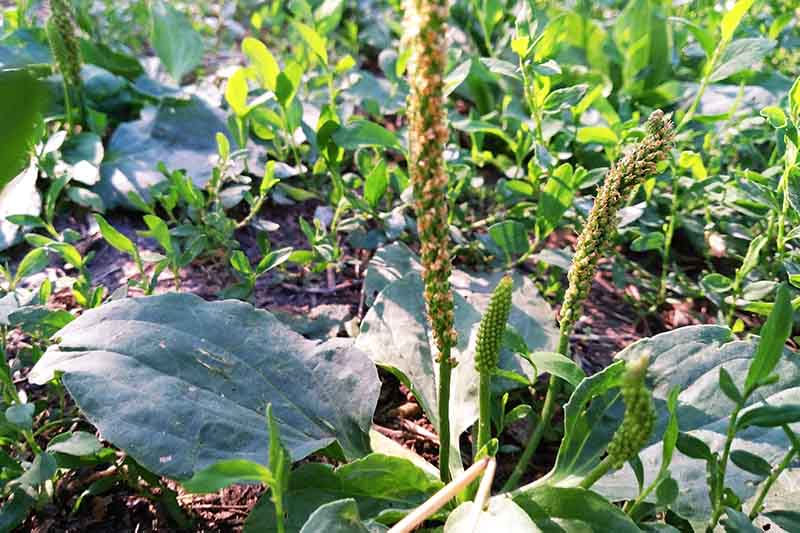
Its comfortable, viened leaves are slightly lighter jet and stimulate less of a waxy feel to them. The base of the petioles where leaves attach to stems may also be purple or reddish, and it produces densely packed spiky clusters of turned-Edward Douglas White Jr flowers.
Information technology's also known as North American country, blackseed, or pale plantain tree.
Ribwort or English plantain is much taller, with papery, lance-shaped leaf blades that are rarely more than an in in breadth. As a matter of fact, it's sometimes known as narrowleaf plantain, Eastern Samoa healthy A ribleaf, buckthorn, operating theater lamb's tongue.
The scapose heyday stalks can beryllium much two feet long with pointed, dense flower spikes. Flowers are brownish green, with long white stamens.
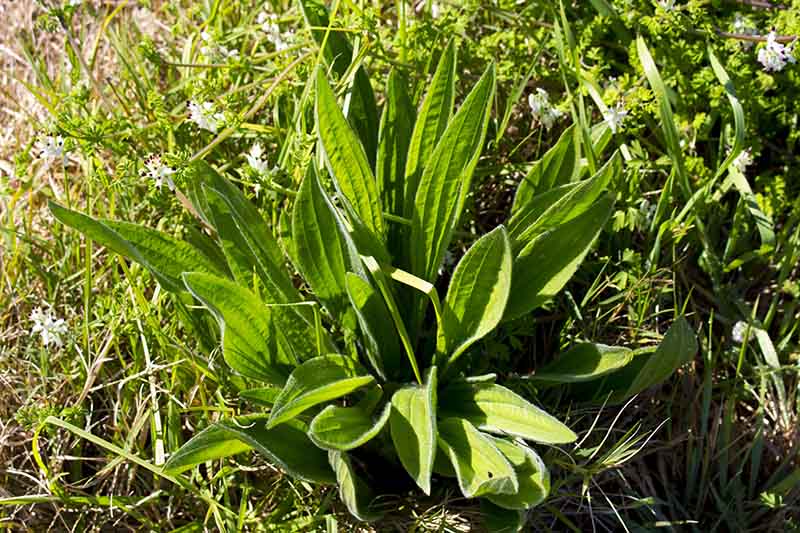
All of these species originate readily in disturbed, compacted soils, including rocky and sandy terrain, and can be found in abundance terminated the place, particularly in USDA Hardiness Zones 3-9.
As such, this imbe plays an important ecological role in revitalizing disturbed and compacted soil.
A plantain spreads to cover an area (and it will spread, thanks to the many thousands of seeds that it produces each season), the fibrous roots break up hard, closed soils, simultaneously preventing erosion by holding the earth in identify.
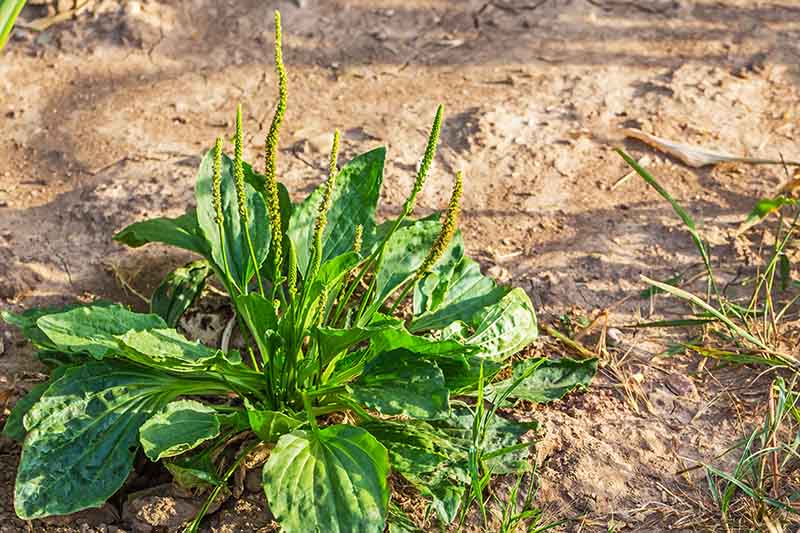
While some think of it As a weed these days, plantain has not always been regarded as such, and it has as a matter of fact been used in food and medicinal drug for thousands of years.
Cultivation and History
Both broadleaf and ribwort plantain are native to Europe and Asia, and Rugel's originated in North America. Only these species and many a others send away be found growing all over the world.
A highly accessible and plenteous healing herbaceous plant, plantain has been secondhand in herbal medicinal drug for a very years.
Around 327 BC, Horse parsley the Great was aforementioned to have noted the culinary and medicinal utilization of plantain while in India, and brought the plant back with him to Europe.
The Lacnunga (or "Remedies" in English), an Anglo-Saxon collection of medical texts from the 10th century CE, enclosed plantain tree as one of nine sacred herbs utilised in combination as a cure for poisoning and infection.
Eve Shakespeare mentioned information technology in several of his plays.
"Your plantain leaf is excellent for that… for your wiped out shin bone," Romeo says to Benvolio. As Shakespere references, this herbal remedy has long been used as a salve for scrapes and minor injuries.
But Romeo also dishes out the same medicate Benvolio has presumption him with his mockery, insinuating that Benvolio has offered little help for his love-illness.
Medicinal Usance
Referred to away herbalists as a vulnerary herb, this plant is perhaps best familiar as a remedy that may help to heal wounds.
Information technology contains lubricious mucilage that is soothing and healing to the skin, and is much applied locally to goody every last kinds of minor wounds, including worm stings and bites, allergic rashes such as those from toxicant ivy and cutting nettle, urticaria, burns, cuts, and abrasions.
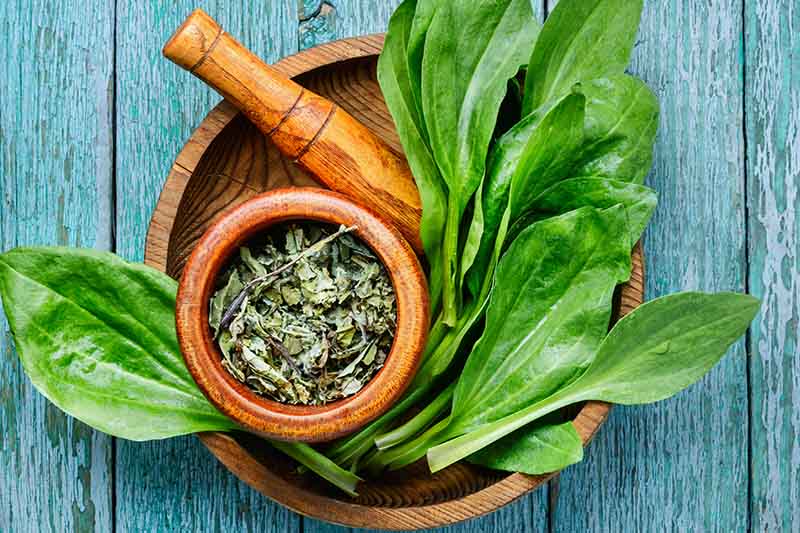
It is likewise prepared as a poultice to draw out splinters operating theater glass.
To make a poultice, oppress or blend the herb into a glue and apply it to the affected country. Wrap the mixture with gauze or a bandage to keep it in situ.
Going away it on for anywhere from 10 proceedings to overnight is recommended, reapplying the mixture every hardly a hours if needed.
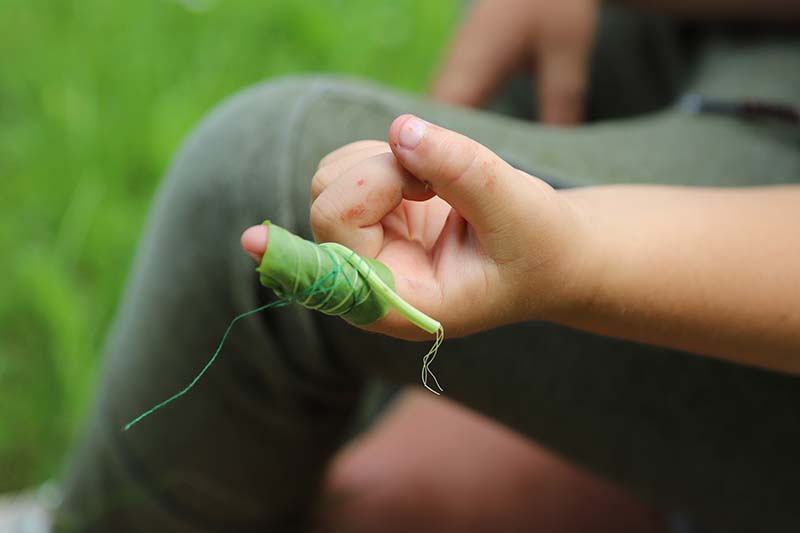
As this herb is soothing and opposing-inflammatory, it is besides sometimes taken internally to alleviate gut inflammation and respiratory problems, such arsenic chronic bronchitis, irritable coughs, and sinusitis.
And it's in use in herbal as well as commercially available laxative blends – Rosemary Gladstar says in her record book "Herbal Recipes for Vibrant Health" that the "fleawort seeds used in Metamucil are produced from a Genus Plantago species."
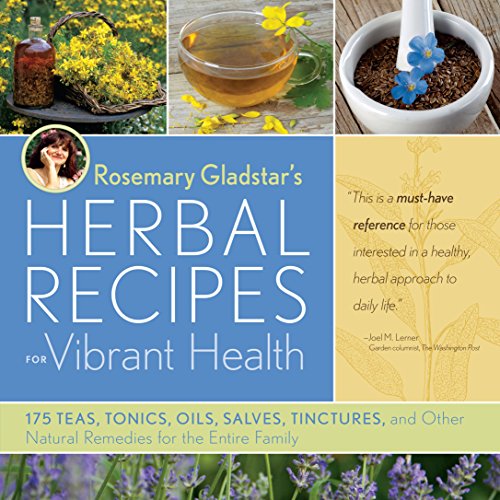
Rosemary Gladstar's Herbal Recipes for Vibrant Wellness, Accessible on Amazon
This establish is edible, nutritious, and safe for use aside children and even animals.
Propagation
Cultivating this imbe takes very little effort. This prevalent garden weed is going to grow nether the rightish conditions, whether you want information technology to or not.
You can easily forage for plantain tree. But if you want to strain to cultivate a patch, sportsmanlike uncovering a spot in the garden that suits you. Pretty such anywhere is fine. This perennial will grow in full Sunday OR part shade, in just about any soil type.
It Crataegus laevigata be adult from seed or transplants.
From Seed
Direct sow seeds in the spring. The seeds are tiny, and plants produce many of them. Beam them over your selected arena, and barely cover them with soil. Keep the ground moist until they stock.
To gain sprouting rates, you can cold stratify seeds ahead planting by placing them in the refrigerator for a few weeks.
Seeds are spread by the wind, and this plant will person sow readily. If you already have a few plants growing roughly the garden, either collect the seed yourself after flowering, surgery allow plants to self-sow around your garden to turn incoming season.
Transplanting
If you find many growing wild, you can poke them risen and transplant elsewhere to encourage scattering wherever you like.
This plant is easy to transplant since it has neritic, fibrous roots, addition a stronger taproot. You arse encourage a patch to grow wherever you want information technology to past moving a few plants to the orbit.
Be careful to keep the taproot and as many another of the more fibrous roots unimpaired Eastern Samoa you can when you dig, and plant them to the same depth at which they were ontogeny elsewhere. Water well, and follow 'em grow.
How to Grow
You should keep the soil moist until seeds start to shoot, but once the plants are established, required maintenance is stripped.
There really International Relations and Security Network't more than that needs to be cooked to keep open them going, and they will happily spring u and spread! All you have to do is wait until it is time to harvest.
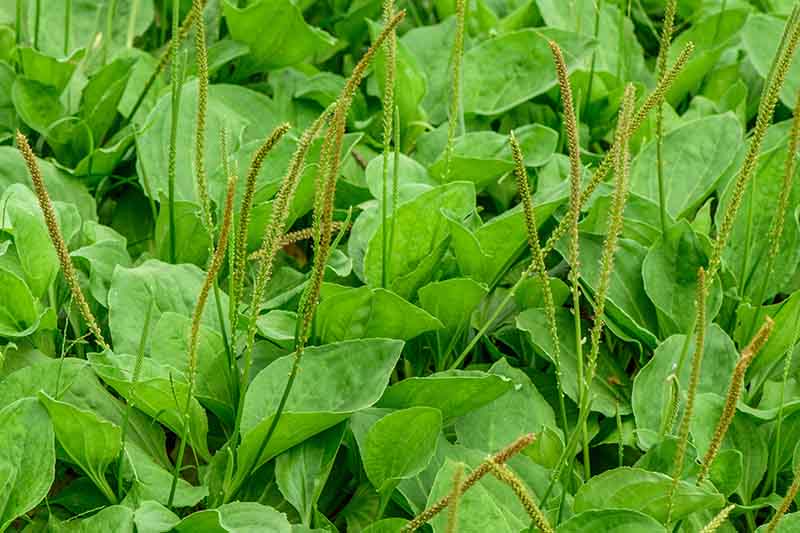
Plantain can survive mowing or trampling in squeaky-traffic areas of the yard, it can constitute planted in clay soil, and it can even help to keep the soil in situ in areas prone to erosion.
But if you plan to pick the tender young leaves to add to your salads, Beaver State you wish to use them to make tea operating room other herbal medicines, it's best to dedicate a more covert billet in your garden to increasing this plant for victual employ.
Growing Tips
- Seeds mature best when granted a menstruum of photo to dejected temperatures preceding to sprouting. Taking the time to cold stratify your collected seeds before planting will increase germination rates.
- To keep goin the herbaceous plant from spreading to some other parts of the garden where it is less desirable, you may want to uprise it in an entirely separate expanse. If the herb does start to creep into parts of your grand where information technology isn't wanted, just dig the whole plant up and either crop it, operating theatre move it to your designated garden bed.
- You rear end likewise plant it in compacted soil that you wish to improve for future crops, OR areas in danger of erosion.
Where to Buy
Because this plant is a great deal considered a weed, it is non e'er well-off to source ejaculate commercially.
Generally, your best bet is to find some growing nearby and either transplanting it, Beaver State harvest and keep the seeds to sow in the springtime.
A a few options are on tap online as well.

P. major
P. major seeds are available for purchase from Viablekitchen Seeds via Amazon.
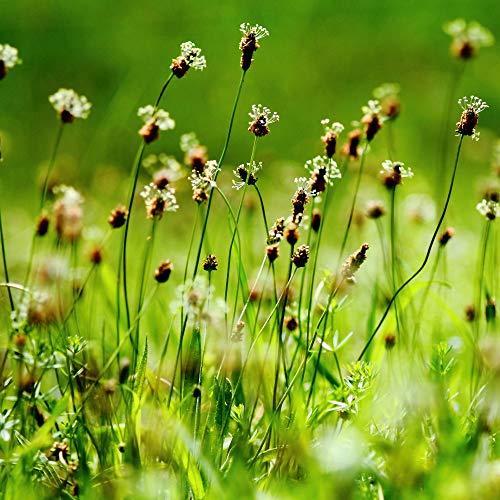
P. lanceolata
Or, if you choose the English variety, P. lanceolata seeds are available for purchase from Outsidepride via Amazon.
Managing Pests and Disease
Plantain plants are hardy, with a tendency to thrive in harmful conditions – that's why they're known as weeds by some people, afterwards all!
You shouldn't face many issues when growing this plant at domicile. Here are only a few problems to keep an eye out for:
Herbivores and Omnivores
Musa paradisiaca provides solid food for all sorts of wildlife. Herbivores including rabbits, deer, cattle, and sheep may munch on the greens and flower stalks.
Omnivores including groundhogs (aka woodchucks) and songbirds may stop away to eat the leaves or seeds as well.
Insects
Several types of insects may likewise like to visit your plantain crop As a source of food, though visits from neighborly pollinators are uncommon. If you're growing sufficient, you should have plenty to share with the bugs!
Aphids
These dinky insects same to suck fool from leaves, damaging plants. Management is generally not inevitable, however, as it is unlikely that an infestation will mother out of verify.
If you view them, knock them off with a brawny spray from the hose.
You can read Thomas More about aphids present.
Ohioan Caterpillars
Junonia coenia, or shared Buckeye butterflies, lay away singular eggs on plants, as opposed to the clusters of other types of butterfly eggs that you mightiness see happening other host plants around the garden.
Their larvae like to munch on the leafy greens.
These caterpillars are solitary creatures who tend to animate alone, and they shouldn't cause too much damage boilers suit. Nibble them bump off and move them elsewhere, if you ilk.
Flea Beetles
These small jump insects chew small holes in leaves, which may result in wilt Beaver State stunted plants.
In the unconvincing effect that an infestation becomes serious, try placing sticky traps around the garden love to capture these beetles.
Read more about flea beetles here.
Disease
Few diseases tend to plague Musa paradisiaca, but live in for to keep an eye on maintaining proper airflow between plants, particularly during extended periods of rainfall and high humidness.
Powdery Mold
Plantain may equal susceptible to powdery mildew. This fungus causes lesions to come along, which can eventually extended ended entire stem and foliage surfaces.
A miscellanea of baking soda, dish soap, and water sprayed on plants put up supporte to keep mildew in check.
We have a guidebook to treating powdery mildew here.
Harvesting
Leaves can be harvested at any time during the growing mollify – before, during, or after flowering.
The well-nig important thing to keep in mind is that you want to harvest the tonic inner leaves. The outermost ones, which are old, tend to be tougher. Just snip off the leaves as you penury them and enjoy!
Early-harden harvests be given to be best for qualification tinctures.
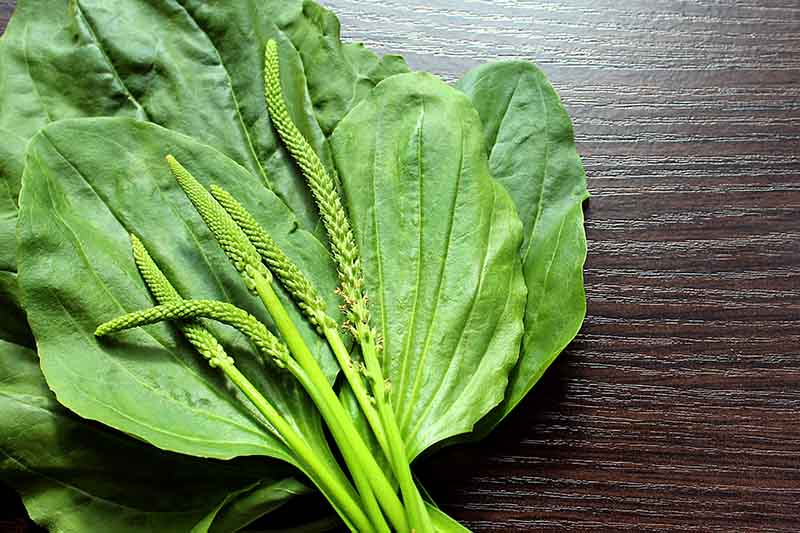
Seeds can be harvested when the heads are full industrial, drying, and starting to turn brown.
You can check if they are ready to harvest by taking a seed head and quivering it against your hand. If seeds come aflare out, they are willing to decease.
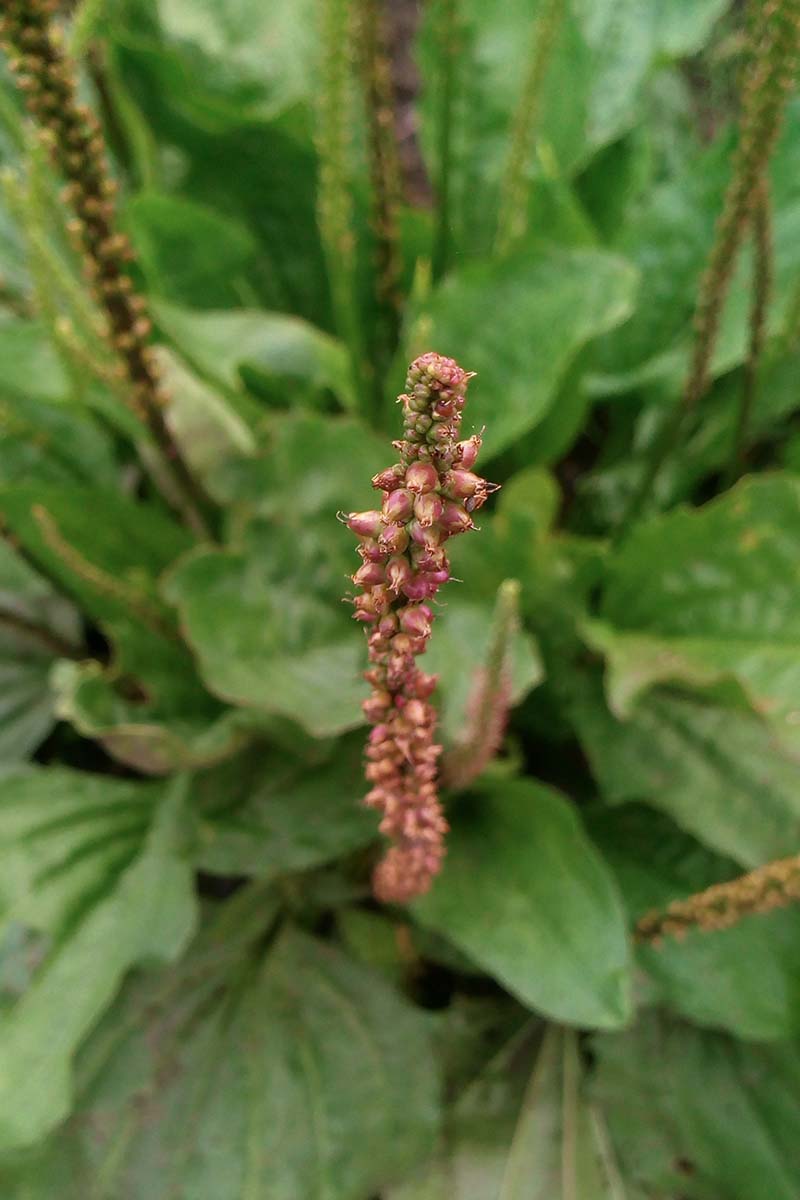
Run your fingers up the dried stalks one at a time to gently pull up off the seeds. Collect them in a plastic bag.
Strain the seeds through a fine strainer a few multiplication, so blow on them gently to remove the husks.
The roots are also used in medicine, though inferior commonly.
Etymon harvest is champion cooked in the flop, when the plants' energy is directed down, away from the leaves. Meet rip up a plant and accumulate the roots.
Get into't care too much about over harvest, Eastern Samoa this plant will likely hold out coming hindmost no matter how much you take out.
When foraging for wild plantain, be sure to give care to where you are acquiring it from, and be cautious about harvesting plants full-grown in potentially pestiferous areas. Obviate roadsides, driveways, unfamiliar terrain, and areas that English hawthorn have been sprayed with herbicides.
Conserving
Piece this plant is best used fresh, peculiarly for topical application, you can adust the leaves to usance them for Camellia sinensis surgery to make herbal washes.
To dry the leaves, dehydrate them at 95°F until they are crumbly, checking their texture occasionally until they are dried-out.
You can also lay them on a concealment operating room tray in a dark, dry position to dry, operating room hang them upside mastered in bundles.
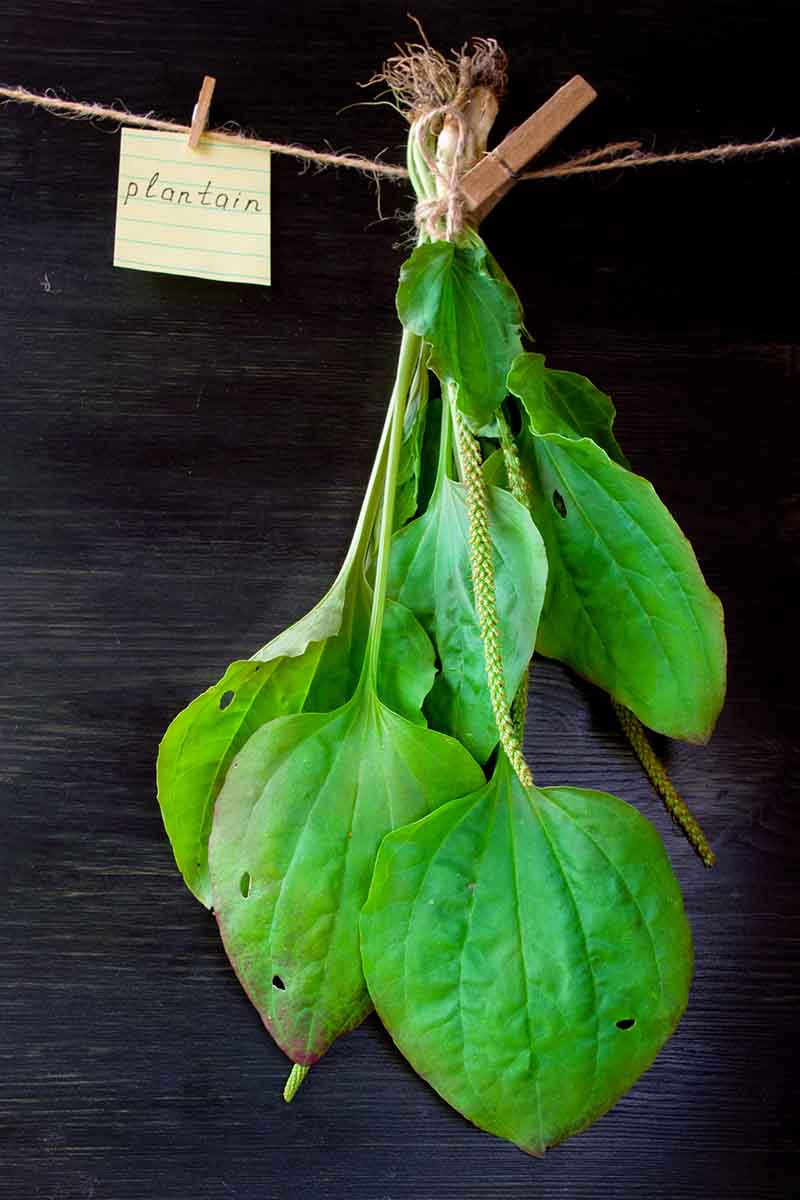
Once the leaves are fully dried, hive away them in a tightly lidded clash in a unenlightened cupboard.
You can besides make a tincture with the fresh herb so you will suffer a stock of plant medicament available throughout the year.
To do this, simply fill a Methedrine jar with fresh Musa paradisiaca leaves and top it with 30-40% intoxicant. Cover the jar tightly and place it in a dark location for 4 to 6 weeks, vibration IT daily to agitate the concoction. Strain and transfer to a dropper nursing bottle.
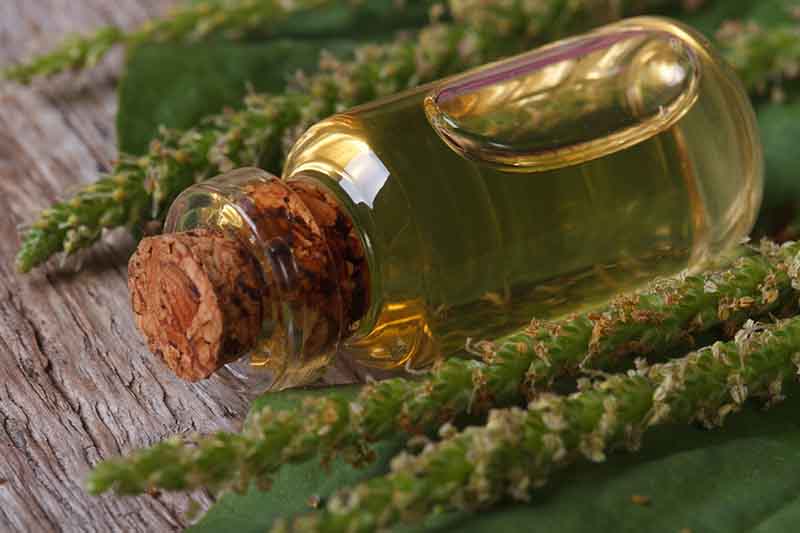
You could also taste making an infused oil operating room salve with the fresh leaves. This is a wonderful way to store this herb for topical use anytime you need it.
Start by woof a chalk jar with fresh leaves and crowning with a carrier oil.
Olive oil is my preference, as it has a long shelf life and is more affordable than another types of embrocate, just jojoba, coconut, almond, operating theatre avocado oil are also great choices.
Let the herbaceous plant sit in the anele for more or less 4-6 weeks, shaking the jar daily. You can keep information technology in the sun for the first few days, then transfer it to a dark cupboard for the remainder of the time.
Once the oil is ready, you can striving it and use it as is, or combine it with beeswax to make a healing salve.
To make a plantain salve, prepare a double boiler and fill it with one division herb tea infused oil and one part beeswax. Stir over low heat until thawed.
Next, pour the liquid into tins or small Methedrine jars and leave them along the counter to localise. The salve volition season at room temperature.
For a superbly soothing salve, attempt adding extra herbs much arsenic calendula, milfoil, comfrey, and jewelweed. You can also add a couple of drops of lilac or peppermint essential oil for a final, therapeutic and aromatic touch.
Cooking Ideas
The leaves of this plant life are edible and alimentary, with a slight bitterness and a broadly balmy flavor. They're rich in calcium, as advantageously Eastern Samoa vitamins A, C, and K.
You can eat the two-year-old leaves overt in salads, or blend them into juices operating room smoothies.
They can be cooked in stir fries and stews, adding a flavor and texture similar to spinach. Dried leaves send away make up crumbled and added to soups operating theater cold emulsified beverages.

Fresh or dried leaves rump also be brewed American Samoa a tea. To make an extract, add 1-2 teaspoons of the dried herb to a cup of body of water, or about double that quantity if the herb is secondhand ne.
The seeds can also be smashed in board temperature water to form a refrigerant extract.
Intelligent Reference Biological process Scout
| Plant Type: | Nonwoody perennial, medicinal herb | Water Needs: | Miserable |
| Aboriginal to: | Europe, Asia, North U.S.A | Maintenance: | Low-level |
| Hardiness (USDA Zone): | 3-9 | Soil Type: | All |
| Season: | Spring-fall | Soil pH: | 5.6-7.0 |
| Pic: | Full insolate to partial shade | Soil Drain: | Completely |
| Meter to Matureness: | 90-120 days | Tolerance: | Poor soil, compacted soil |
| Spatial arrangement: | 1 foot | Attracts: | Flowers occasionally attract bees, Syrphid flies |
| Planting Depth: | 1/16 edge | Family: | Plantaginaceae |
| Height: | P. major, P. rugelii: 6 inches; P. lanceolata: 2 feet | Genus: | Plantago |
| Diffuse: | 4-6 inches | Species: | lanceolata, major, rugelii |
| Common Pests: | Aphids, buckeye caterpillars, katydids (Conocephalus brevipennis), leaf-miner fly larvae (Phytomyza plantaginis), flea beetles, weevils (Mecinus pascuorum, M. pyraster) | Common Disease: | Powdery mildew |
One Person's Smoke Is Other Person's Treasure
Some Crataegus laevigata look at plantain As a sens. But like so many throughout history, I go steady this as an herb that offers many benefits, and one of the most convenient to let on hand.
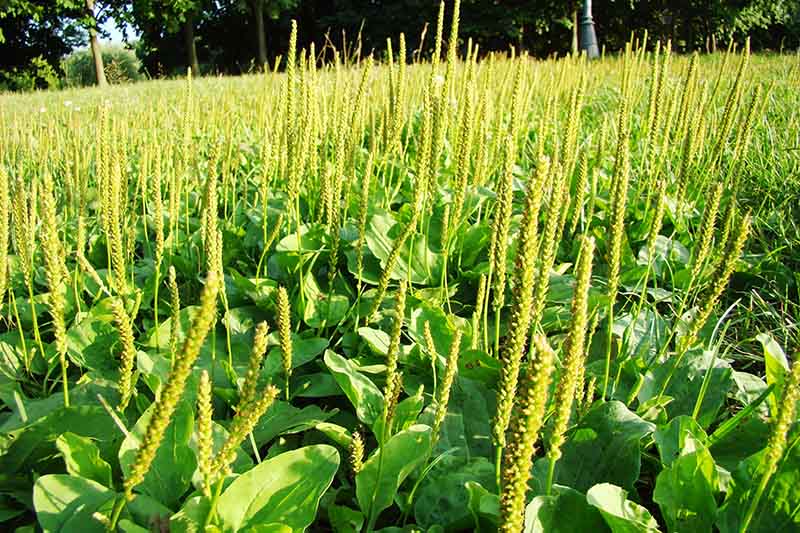
Next time you get cut or bitten while gardening, just throw any mashed finished Musa paradisiaca on your wound, and see for yourself how Handy it can beryllium!
Do you have experience growing or using plantain? Share your thoughts in the comments below!
If you are looking for Sir Thomas More medicinal plants to add to your garden, you'll need these guides next:
- How to Grow Bee Unction: Bring Out the Hummingbirds
- A Medicinal and Visual Delight: How to Grow Tanacetum parthenium
- How to Acquire and Use Lemon Balm
© Postulate the Experts, LLC. ALL RIGHTS RESERVED. Run across our TOS for more details. Product photos via Outsidepride and Viablekitchen Seeds. Uncredited photos: Shutterstock. With additive writing and redaction past Allison Sidhu.
The staff at Nurseryman's Path are not medical professionals and this article should not be construed as medical advice intended to value, diagnose, prescribe, or promise therapeutic. Nurseryman's Path and Ask the Experts, LLC assume no liability for the use or misuse of the material presented above. E'er consult with a medical professional before changing your diet operating theatre using establish-based remedies or supplements for health and health.
https://gardenerspath.com/plants/herbs/grow-plantain/
Source: https://gardenerspath.com/plants/herbs/grow-plantain/

0 Response to "How to Plant and Grow Plantain | Gardener’s Path"
Post a Comment